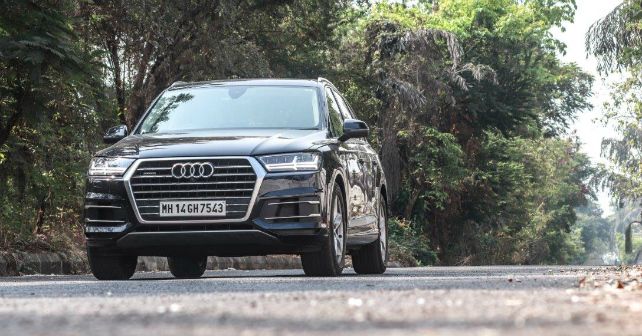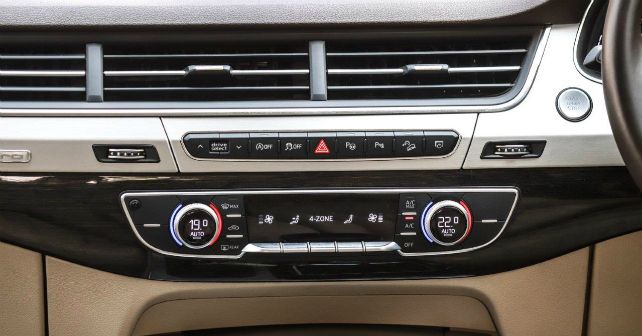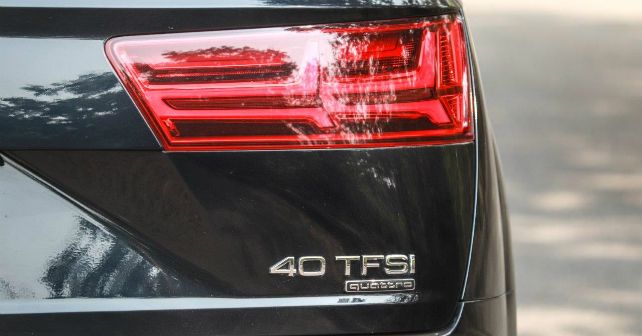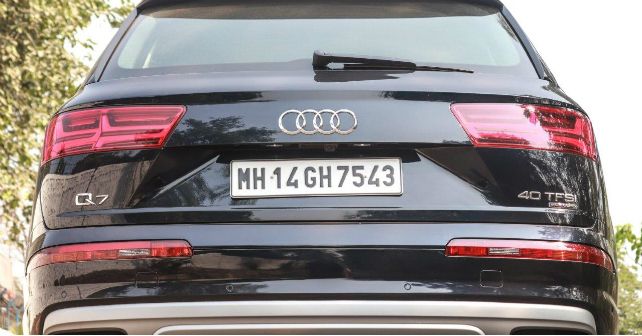Given its size and weight, a 2.0-litre petrol motor in the Audi Q7 may seem to be an overambitious move, but from behind the wheel, it tells a different story.
Broadly speaking, the luxury-car segment has two kinds of buyers. On the one hand, you have the hardcore petrolheads who continue to believe that there is no replacement for displacement. On the other hand, there are those who support downsizing and efficient extraction of performance. The Audi Q7 40 TFSI as a car firmly falls in the latter category. But the question that needs to be answered is – does the 2.0-litre gasoline motor do justice to a car of this size and weight?
Small but strong
Audi first introduced the new Q7 in India in December 2015. While at the time the Q7 only had a diesel engine, the petrol was introduced last year. As this 40 TFSI is just a new engine variant, we are going to get straight to the meat of the matter.
The Q7 petrol weighs over two tons and comes with a 2.0-litre motor producing just 248bhp and 370Nm. This essentially gives it a power-to-weight ratio of about 110bhp/ton, which is more or less similar to that of the Maruti Suzuki Baleno RS – not something that you expect from a Rs. 78 lakh car. But the specs don’t tell the complete story. To start with, the Q7 petrol is exactly what you’d expect a petrol luxury SUV to be. The engine is superbly refined, and you notice this the moment you hit the start button. At standstill or even while driving, there is barely any noise inside the cabin. As you dig your right foot deeper though, some tyre noise is audible inside the cabin, but it’s not profusely bothersome. The sluggish nature of the engine in its bottom-end can be a bit irksome and make you question Audi’s choice of engine for the Q7. But once the tacho needle crosses the 1,800rpm line, the car feels reasonably better. While it still isn’t going to bring you a trophy at a drag racing event, its power delivery is adequate. Out on the highway, the Q7’s motor is made to work while quickly overtaking a long vehicle – it isn’t sluggish, but it’s always evident that a small engine has a large car to pull. Despite that, the company claims that the Q7 can do the 0 – 100km/h dash in just 6.9 seconds, which makes it quicker than the Land Rover Discovery – not just the 2.0-litre variant, mind you, but also the 3.0-litre V6 trim.
The Q7 is a classic example of how the gearbox can hugely affect the performance of a car. The 8-speed tiptronic box shifts flawlessly. In the D mode, it quickly shifts up for most efficiency. In the S mode, however, it holds the revs longer to ensure that power is always available on tap. It also comes with a drive selector mode that tunes the engine, gearbox, steering and suspension as per your driving style. Speaking of which, like its diesel counterpart, the petrol Q7 also comes with air-suspension as standard. In union with a ground clearance of 200mm, this essentially endows it with the ability to deal with potholes of all sizes. As far as handling is concerned, the Q7 changes direction smoothly and quickly, which is remarkable, given its size and weight. While the car handles reasonably well, a direct steering and a little more controlled body roll would have worked wonders in making it fun to drive. The biggest positive of the Q7 is how it just wraps around you to make you oblivious of its size from behind the wheel.
Design and Equipment
Except for the 40 TFSI badge on the tailgate, the Q7 petrol looks exactly identical to its diesel counterpart. While it is pegged as an SUV, the Q7 looks somewhat like an estate, which essentially is the result of its long 2,994mm wheelbase. That being said, the Q7 will continue to appeal to those who have a soft corner for a clean yet classy design. In terms of equipment, the Q7 leaves little to complain about. From Audi’s Virtual Cockpit to intelligent cornering lights, four-zone climate control, electric tilt and telescopic steering and reversing camera with guidance, the Q7 has it all.
Buy or Bye?
Audi’s flagship SUV has a lot of things going in its favour, including performance, refinement and comfort, but the lack of grunt in its lower rev range does make the need for a bigger engine evident. It also falls behind in the design department, especially in comparison to cars like the Mercedes-Benz GLS and the Land Rover Discovery. The biggest advantage of the Q7, however, is its price. Thanks to the tax advantage that 2.0-litre engines get, Audi has been able to price the Q7 40 TFSI at Rs. 71.08 lakh for the base trim and Rs. 78.07 lakh (ex-showroom Delhi) for the top-spec Technology Pack Trim. At that price, it isn’t a car you can ignore, and definitely not the one that you can go wrong with. But if you are willing to spend a bit more in want of an overwhelming experience, the Land Rover Discovery is a better buy.














![Audi Q7 [2015-2020] Audi Q7 [2015-2020] Model Image](https://static.autox.com/uploads/cars/2017/05/1450935001-Audi-Q7.jpg)




















Write your Comment